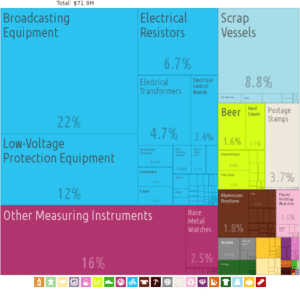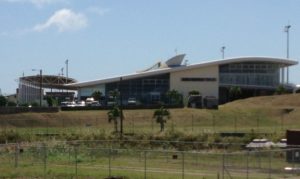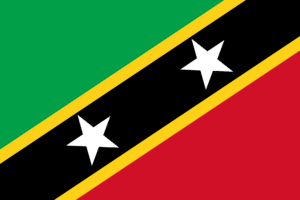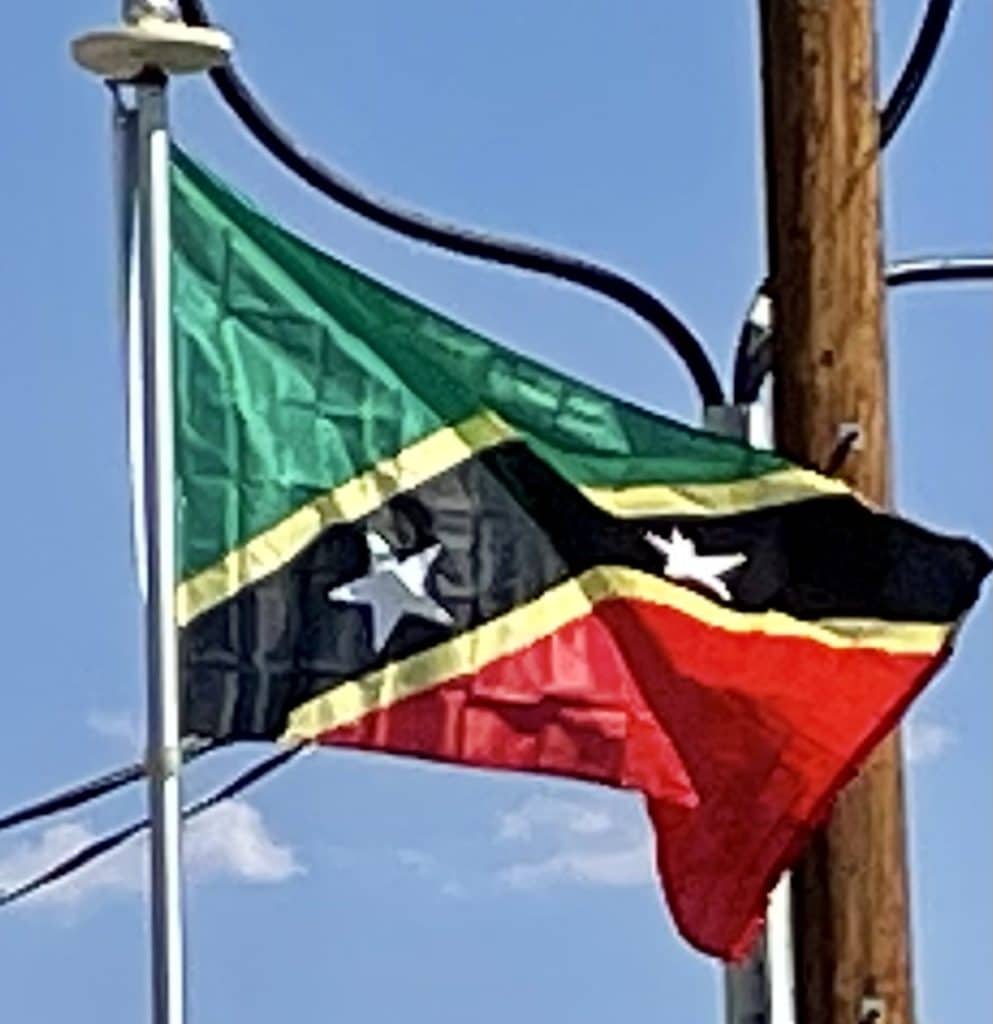
St. Kitts and Nevis is heavily dependent upon tourism to drive its economy, a sector which has expanded significantly since the 1970s. In 2009 there were 587,479 arrivals to Saint Kitts compared to 379,473 in 2007, an increase of just under 40% in a two-year period, however the tourist sector decreased during the Global financial crisis and has only recently returned to pre-crash levels. In recent years the government has sought to diversify the economy via agriculture, tourism, export-oriented manufacturing, and offshore banking.
Transportation:
Saint Kitts and Nevis has two international airports. The larger one is Robert L. Bradshaw International Airport on the island of Saint Kitts with service outside to the Caribbean, North America, and Europe. The other airport, Vance W. Amory International Airport, is located on the island of Nevis and has flights to other parts of the Caribbean.

The St. Kitts Scenic Railway is the last remaining running railroad in the Lesser Antilles.
Flag of Saint Kitts and Nevis:
The flag of Saint Kitts and Nevis consists of a yellow-edged black band containing two white stars that divides diagonally from the lower hoist-side corner, with a green upper triangle and red lower triangle. Adopted in 1983 to replace the flag of Saint Christopher-Nevis-Anguilla, it has been the flag of the Federation of Saint Kitts and Nevis since the country gained independence that year. Although the flag utilizes the colors of the Pan-Africanist movement, the symbolism behind them is interpreted differently.

A national competition was held in the early 1980s to choose a new flag. The winning design by student Edris Lewis was one of 258 entries. It was first hoisted one minute after midnight on 19 September 1983, the day Saint Kitts and Nevis became an independent country.
The colors and symbols of the flag carry cultural, political, and regional meanings. The green alludes to the country’s fertile land, while the red evokes the fight for freedom against slavery and colonialism. The yellow stripes represent the sunshine the islands enjoy all year round, and the black epitomizes the people’s African origins. The two stars on the black band symbolize hope and liberty. The official meaning behind the flag’s symbols was formulated by Edris Lewis, the same person who designed the flag.
